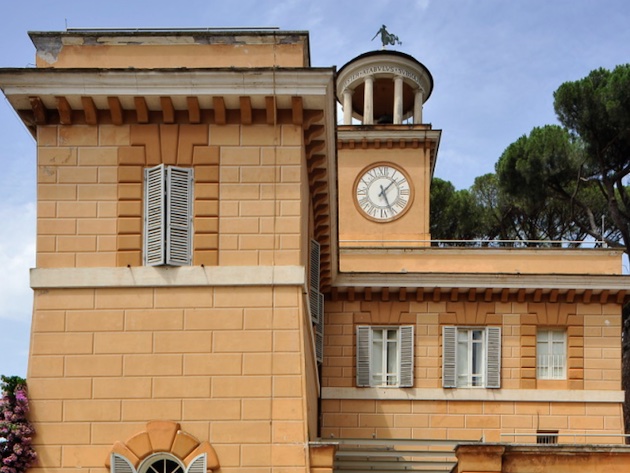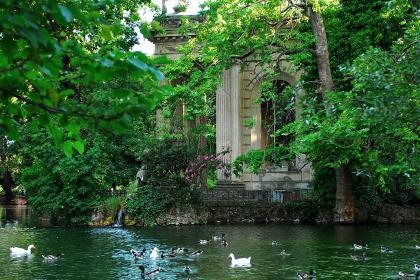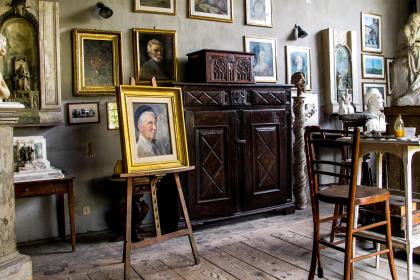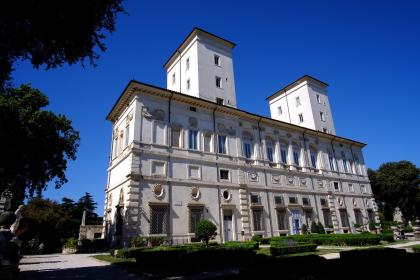
Located between Piazza di Siena and Viale dei Cavalli Marini, along the axis that leads from the entrance of Viale Belle Arti to Via Pinciana, the Casino dell’Orologio is one of the most beautiful farmhouses in Villa Borghese. Built in the 16th century as a service building annexed to a rural estate, at the beginning of the 17th century the Casino became part of the wonderful Villa Pinciana, built by Cardinal Scipione Borghese (1576-1633) outside the Porta of the same name. In 17th-century sources it is described as a two-story building, with a courtyard and a large portico, used as the gardener's house.
The building maintained its architectural appearance unchanged until the end of the eighteenth century; in fact, it was only during the massive renovation works of the villa in neoclassical style, commissioned by Marcantonio IV Borghese (1730-1800), that the casino took on its current appearance, attributable to the project of the architect Mario Asprucci. The project included the addition of massive corner spurs and large openings on the ground floor; on the top of the factory Nicola Fagioli built a quadrangular turret containing a clock, which would characterize the building, definitively changing its name. The ancient Casino del Giardiniere was then used to house the collection of statues and ancient furnishings from the Borghese estate in Pantano, discovered during the excavations of the ancient city of Gabii, conducted under the direction of Gavin Hamilton (1723-1798).
The Gabii Museum, inaugurated in 1797, was short-lived, however, because in 1807 a good part of the Gabine sculptures were sold to Napoleon Bonaparte, whose sister Paolina Camillo Borghese had married. In the second half of the nineteenth century, the Casino housed a restaurant and was later used for exhibitions organized by the Roman Watercolourists Society. Immediately after the acquisition and opening of the villa to the public in 1903, significant renovation work was carried out, including the construction of a new reinforced concrete floor to cover the building.
In 2006, during a new functional adaptation, the partitions, made inside the large hall on the ground floor in the 1950s, were removed and significant traces of the original fresco decoration were found, with a fake pergola animated by colorful birds.
Since 2020, the building has been the seat of the Capitoline Superintendence of Cultural Heritage - Directorate of Villas, Historic Parks and Scientific Museums.
Photo credits: Capitoline Superintendency
Villa Borghese

 Condividi
Condividi
Pietro Canonica Museum

 Condividi
Condividi
The Borghese Gallery

 Condividi
Condividi
Information
 Condividi
Condividi
Location
To find out about all accessibility services, visit the Rome accessible section.











































